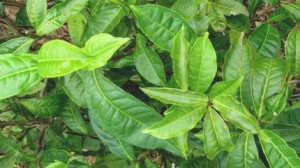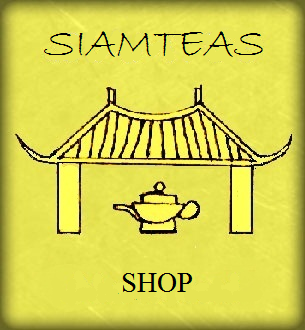The History of Tea
The history of tea reaches back several thousands of years. Most sources date the first use of tea for consumption and medicinal uses to about 2700 – 2800 BC.
Some of the earliest mentionings regarding this time can be found in the Tea Bible “Cha Jing” (“The Classic of Tea”), a landmark publication in the history of tea written by the Chinese literate Lu Yu. According to the Cha Jing, tea became first known through the Chinese healer Shennung (2737BC.), and was further promoted by the ruler Zhou Gong (1100 BC). Shennung lived in the 28th century BC and is described as a special healer in China’s first history book (206-24 B.C.). Shennung was known for his talent to identify special herbs for the treatment of diseases.
He discovered tea, according to the legend, when some tea leaves suddenly fell into some water he was boiling underneath a tea tree. He noticed the water had changed its color, and proceeded to taste it. Immediately, a refreshing and exhilarant effect occurred. He later recorded the lightly bitter and, at the same time, sweetish drink, had detoxifying properties as well. He virtually “wrote” tea history, influencing generations of natural healers, amongst them the famous German writer, composer and philosopher, Hildegard von Bingen.
Another story told in many articles on the history of tea tells that Shennung was capable of observing his inner stomach. He experimented with all kinds of plants and observed which effect they would have inside him. When experimenting with the tea plant he had the feeling as if the tea would sway back and forth in his stomach, as if it would subject his stomach to an examination. This is why he called this plant “Cha”, which in Chinese means “examine”.
In the medicinal herb book “Bencao” (655 AD), tea is also mentioned as a medicinal herb. According to this historical source, tea increases people’s vitality, boost their concentration, and enhances their will to live. Tea is described to have a refreshing and stimulating effect on the body. Tea also became known to improve digestion. The health benefits related to tea have been mentioned in Chinese literature time and again throughout the history of tea.
Up to the 13th century, the common practice was to press the tea into the form of flat cakes. The tea had to be moved from the southern provence where it was grown, to the imperial court. The pressing of tea into cakes worked well because it was easier to transport, and the cakes conserved space. The pressing of tea to cakes has been common eversince throughout the history of tea and is still the most typical trade form for Pu Erh Tea today.
In the 3rd century AC, an author named Zhang Ji describes how a piece is broken off the flat tea cake, roasted over a fire, then crushed and doused with hot water from a porcelain jar. According to his recipe, ginger roots, spring onions, and tangerines are also added to the brew. The resulting drink is supposedly a wonderful medicine for excessive alcohol consumption and fatigue.
The exotic blending of teas became fashionable during the cultural heyday of the Tang dynasty (618-907 AD). People used to brag amongst each other about the newest and trendiest teas in their possession. The upper class were always on the search for the newest blends and spent considerable amounts of time and money to get a hold of them. It became common to mix the crushed tea flat with spices or herbs before adding the hot water, which suppresses the natural taste of the tea, although, given the modern practice of scenting teas, is still a common and fashionable practice today.
Lu Yu, the author of the Tea Bible “Cha Ying” – The Classic of Tea” – had grown up as an orphan in a Zen monastery to become one of the most central figures in the history of tea. He had a critical attitude towards the prevailing tea culture, which he considered to be decadent. For his own studies of tea history, he consulted old scriptures and found out that there had been a time, when tea leaves had simply been chewed in the mouth or cooked with water, a method that had put the emphasis on the genuine taste and odor of the tea. Lu Yu advocated this traditional way of tea preparation, and regarded the drinking of tea a ritual and spiritual act. Initially, his views on the importance of the purity of tea bore only modest fruit. Only at a much later point in the history of tea, i.e. in the 11th century, did his point of view received increasing recognition. The teachings of the Cha Ying wield a noticeable influence on the way of tea preparation until today.
Much of the development of tea as a commodity, including the methods of cultivation, commercialization, and tea processing can be attributed to the Chinese (examples: Green Tea, Oolong Tea, Black Tea, scented teas). Japanese as well as Indian sources substantiate that in both cases tea was originally brought into their country’s by travelers returning from China. Young Buddhist monks from all over Southeast Asia who had spent time in Chinese monasteries and temples, returned home knowledgeable in the cultivation and preparation of tea. In the subsequent course of the history of tea, this knowlege spread to India, Japan, Taiwan, and Korea. This contributed to the further development and diversification of tea cultivation and processing in countries such as Japan, Taiwan or India.
Tea was first brought to Europe by the Portuguese priest Gasper da Cruz. After his return from China to Portugal in 1560 he wrote the first book about tea and tea history published in Europe. The Portuguese royal family was subsequently actively involved in the spread of the tea-drinking habit to other European countries’ high society circles.
Tea held its great historical march of triumph through all of Europe in the course of the 17th century. Ever since, the beverage along with the culture and rites surrounding the consumption of tea, in European life and social life have claimed a leading position amongst the most established and widespread beverages and donors of health benefits available, with distinct characteristics and varying appearance and degree of importance throughout the individual European countries (see England).
Although in general there is agreement that China was the venue of the tea plant’s discovery and thereby the origin of the history of tea, the author Martin Krieger notes in his book “Tea – A Cultural History” the following:
“Some hill tribes in India, China, Thailand and Burma initially discovered by chance the stimulating, concentration capabilities-enhancing and healing properties of the tea plant’s leaves, and ancient China the opportunity of its commercialization.”
People familiar with the Chinese sense of business and the rootedness of the tea culture and tea cultivation in the lives of the Northern Thai mountain tribes, will have to at least concede a certain historical probability to this theory. It therefore at least suggests itself that in the area, which is now the Northern Thai/Burmese border region, tea was grown by the hill tribes for their own private use at a very early stage in the history of tea.









